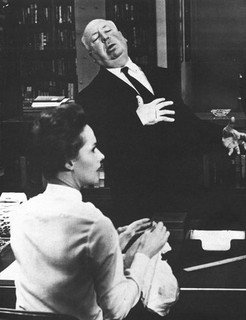Lost in your eyes/Foreign Correspondent
dal 29/4/2009 al 27/6/2009
Segnalato da
29/4/2009
Lost in your eyes/Foreign Correspondent
FormContent - new space, London
Foreign Correspondent is a 1940 thriller film directed by Alfred Hitchcock which tells the story of an insubordinate American reporter, sent to London from New York to investigate a series of events. Lost In Your Eyes was born as group show presented at Columbia University, New York; FormContent was invited to curate the London segment of exhibition which will present new works of Aoife Collins and Maria Taniguchi and a special project on Signals.

Foreign Correspondent is a 1940 thriller film directed by Alfred Hitchcock which tells the story of Johnny Jones, an insubordinate American reporter, sent to London from New York to investigate a series of events that eventually unveil a European conspiracy leading to the events of a fictionalized Second World War.
Lost In Your Eyes was born as group show conceived by Jon Cuyson and Dominic Mangila and presented at Le Roy Neiman Gallery, Columbia University, New York at the end of 2008. Paul Pfeiffer, Manuel Ocampo and David Medalla were invited by the initiators to contribute an image, idea or an object that would trigger a response from the other 35 participating artists. FormContent was invited to curate the London segment of Lost in your Eyes, for which we debated for some months on possible ways of tackling the exhibition and came to the conclusion to focus on two artists’ practices whilst developing new works.
Aoife Collins (Ireland, 1980) questions modes of representation through works that employ appropriated imagery and objects. Through repetition and fabrication, the artist comments on the trickery of what we see and pushes the mentor-pupil relationship insinuated in the original premise of Lost in your Eyes to the extreme. Collins is presenting two ink jet prints: The Journey of a Revenant and Like an Extra Hand. Both images are taken from the pages of a 1970s knitting manual, then altered and repeated to stress the impression of a vampiresque relationship that could be implied in the original title of the exhibition. The third piece is Mirror orchid/Ophrys speculum, in which three artificial orchids are taken apart manually by the artist thread by thread and reassembled to form new compositions placed in mirror vases. Nothing is lost and nothing is added, but the piece nonetheless undergoes a metamorphosis. In the gallery two objects resembling rocks will also be presented; they are obtained from white paint sanded from the artist’s studio wall and floor and combined with water. A new life and new narrative is given to these materials.
Maria Taniguchi’s (Philippines, 1981) research trajectory is determined by drifting from link to link and the short term memory produced by using a web site such as Wikipedia. The informational content relies directly on the logic of the network, while new windows open new scenarios in the development of the work. This undergoes different stages before information is solidified as object, which the artist defines as “colloquial”. In Taniguchi’s works there is normally an outcome that is part image and part object, which re-organizes the tenuous links existing between subject, representation and process. A place among other places takes the sculptural form of a stack of posters, available for the public to be taken away. In order to achieve that formal result the artist has been considering indexical words such as: tropics, utopia, Mondrian and modernism. The other works on display are pencil drawings Untitled Mirrors, the second skin of work that started as photographic prints of assembled surfaces collected from various home building, flooring and kitchen tiling companies sourced from the web.
We have been trying to invite David Medalla to the show but despite an e-mail exchange, never managed to meet him in the flesh. A hommage to him consists of devoting a section of Foreign Correspondent to Signals, a journal he edited between 1964 and 1966, while he was also running an art gallery of the same name on Wigmore Street, London. Signals was one of the main venues for the presentation of avant-garde and international experimental art. The bulletin was not only an artistic tool but also a forum for a political, social and scientific debate publishing the likes of Pablo Neruda and Gaston Bachelard, to name a few.
The image on the recto is taken from the set of the film Marnie, where Hitchcock is teaching actress Tippi Hedren how to faint.
Thank you to Jon Cuyson and The Centre of Attention.
Private View Thursday April 30, 6.30 - 9 pm
FormContent - new space
Second Floor, 51-63 Ridley Road (Dalston) - London
Free admission



